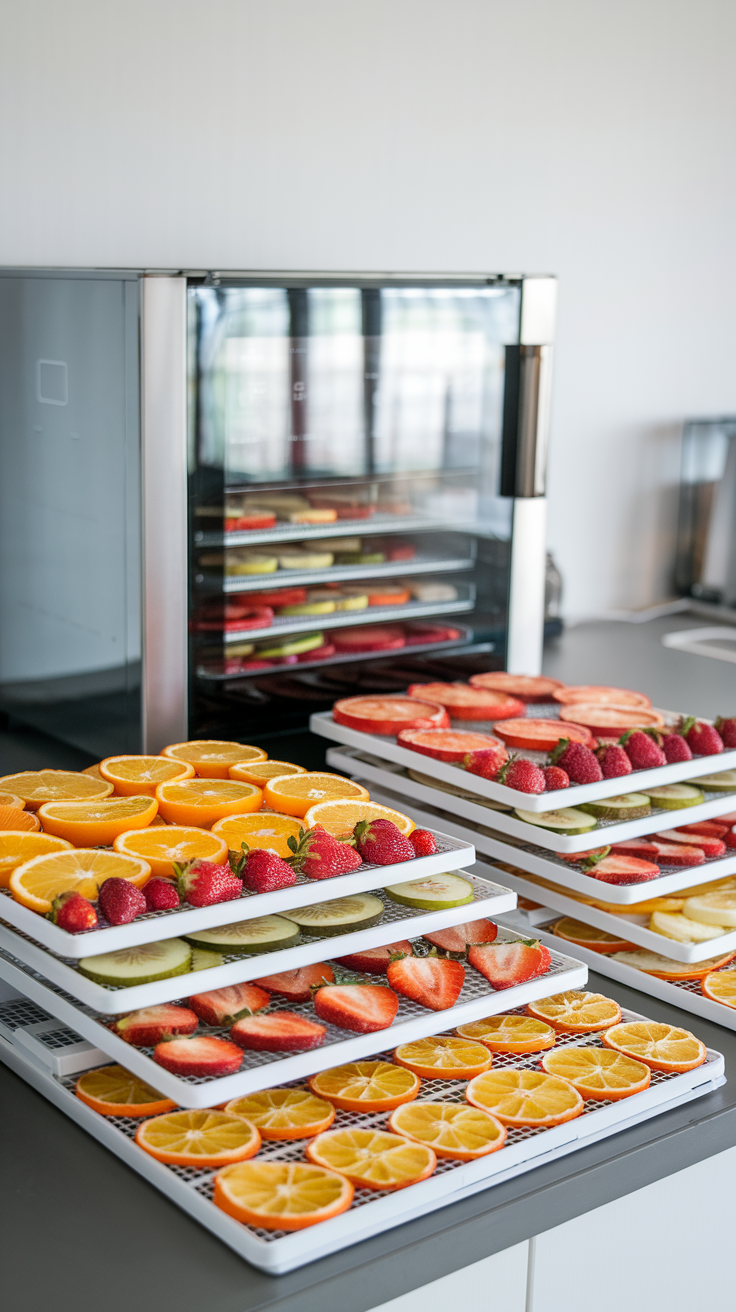How to Make Sauerkraut at Home: A Simple Recipe for Delicious Fermentation
Making sauerkraut at home is easier than you might think. You only need a few simple ingredients and some patience to create delicious, tangy sauerkraut right in your kitchen.
This traditional fermented food not only tastes great but also offers health benefits, including probiotics that support gut health.
Read more: How to Make Sauerkraut at Home: A Simple Recipe for Delicious FermentationThe process combines fresh cabbage and salt—two key components that work together during fermentation.
By following a few straightforward steps, you can enjoy a tasty side dish or ingredient for your meals.
Whether you’re a seasoned cook or just starting, making your own sauerkraut is a fun project that rewards you with flavorful results.
Get ready to unlock the secrets of this age-old recipe. You’ll discover how simple it is to make sauerkraut, plus tips on storing and serving it so you can enjoy it for months to come.
| This article walks you through the easy process of fermenting cabbage using just two ingredients—cabbage and salt! Learn how to prepare, ferment, and store your homemade sauerkraut, while also discovering the health benefits and versatile ways to enjoy this probiotic-rich food. Whether you’re a beginner or an experienced home cook, this guide will help you create tasty sauerkraut with confidence. |
Essentials of Sauerkraut
Making sauerkraut at home requires understanding its benefits, knowing the key ingredients, and having the right tools. These elements help ensure a successful fermentation process.
Benefits of Sauerkraut
Sauerkraut offers several health benefits. It is rich in vitamins C and K. It also contains probiotics that can enhance gut health.
Probiotics are live bacteria that are good for your digestion. Eating sauerkraut may help improve your immune system. It can also aid in nutrient absorption.
In addition to health benefits, sauerkraut is a low-calorie food. It can also be a great way to preserve cabbage, reducing food waste.
Key Ingredients
To make sauerkraut, you need just a few main ingredients:
- Cabbage: Use green or red cabbage. Freshness matters for the best results.
- Salt: Coarse sea salt is ideal. It helps draw moisture from the cabbage and aids fermentation.
- Optional spices: Caraway seeds or juniper berries can add flavor.
You should avoid using table salt, as it often contains additives that can affect fermentation.
Make sure your ingredients are clean and free from contaminants. This ensures a safe and tasty sauerkraut.
Required Tools and Equipment
You’ll need some basic tools to make sauerkraut:
- Cutting board and knife: For chopping the cabbage.
- Mixing bowl: To combine cabbage and salt before packing it.
- Fermentation jar or crock: Essential for storing the sauerkraut as it ferments.
- Weights: These keep the cabbage submerged under the brine.
Choosing the right jar is important. A wide-mouth glass jar works well, as it allows easy packing.
Keep everything clean and sanitized to avoid spoilage. This setup will help you craft delicious homemade sauerkraut.

Preparation Techniques
Preparing to make sauerkraut is key to achieving the best flavors and textures. Proper selection and handling of cabbage can make a big difference. Focus on high-quality produce and follow these steps for the best results.
Selecting the Right Cabbage
When making sauerkraut, the type of cabbage you choose matters. Look for fresh, firm heads of green cabbage. The leaves should be tightly packed and crisp. Avoid any cabbage with brown spots or wilting leaves.
Consider using savoy cabbage for a sweeter taste. If you like a deeper flavor, try purple cabbage. Both types can be fermented successfully.
Aim for heads that weigh between 3 to 5 pounds. This size is manageable and produces a good amount of sauerkraut.
Cleaning and Cutting
Once you select your cabbage, start by cleaning it. Rinse the head under cold water to remove dirt or debris.
After cleaning, use a sharp knife to remove the core. The core is tough and should be discarded.
Next, cut the cabbage into thin strips. Aim for slices about 1/8 inch thick. This thickness allows for even fermentation. If you prefer, you can shred the cabbage using a food processor for quicker results.
As you cut, place the cabbage into a large bowl. Sprinkle sea salt over the layers of cabbage. This salt helps draw out moisture, which is essential for fermentation. Mix gently for a few minutes to ensure the salt is evenly distributed.
Fermentation Process
The fermentation process is key to making sauerkraut at home. It involves two main steps: salting and bruising the cabbage and creating an anaerobic environment. Each step plays a crucial role in the development of flavor and texture.
Salting and Bruising
To start, you’ll need to prepare the cabbage. Remove the outer leaves and chop or shred it into thin pieces. Weight is important, so aim for about 2 pounds of cabbage.
Next, sprinkle salt over the cabbage. Use about 1-3 tablespoons of salt. This salt helps draw out moisture and promotes fermentation.
As you mix the salt into the cabbage, bruise it with your hands. This releases natural juices, creating a brine. Continue mixing and bruising until the cabbage is soft and submerged in its own liquid.
You can also weigh down the cabbage if needed. This ensures the cabbage stays below the brine, which is essential for proper fermentation.
Creating an Anaerobic Environment
Once the cabbage is salted and bruised, your next goal is to create an anaerobic environment. This means keeping out air to prevent spoilage.
Pack the cabbage tightly into a clean, glass jar or fermentation crock. Leave some space at the top, as gases will build up during fermentation.
Using either a fermentation weight or a clean stone, press down the cabbage to keep it submerged.
Seal the jar with a lid or cloth. If you use a lid, make sure it’s loose to allow gases to escape.
Store the jar in a cool, dark place. Fermentation will take about 1 to 4 weeks, depending on your taste preference.

Maintenance and Storage
To keep your sauerkraut at its best, it’s important to monitor the fermentation process and store it correctly. These steps ensure you enjoy fresh and tasty sauerkraut for a long time.
Monitoring Fermentation
Check your sauerkraut daily during fermentation. Look for bubbles, which indicate that the process is working.
If you notice an unusual smell or mold, it’s best to discard it.
Keep the sauerkraut submerged in the brine. If it floats, you can use a clean weight or a small plate to hold it down.
Taste your sauerkraut around the week mark. It should be tangy and crunchy.
Depending on the room temperature, fermentation can take anywhere from one to four weeks. The warmer it is, the faster it ferments.
Storing Sauerkraut
Once your sauerkraut reaches the desired taste, it’s time to store it.
Transfer it to clean glass jars or airtight containers. Make sure the sauerkraut is fully submerged in the brine to prevent spoilage.
Seal the jars tightly and store them in the refrigerator. The cool temperature slows down further fermentation, keeping your sauerkraut fresh.
You can also freeze sauerkraut for long-term storage. Just remember to defrost it in the fridge before using.
Properly stored, your sauerkraut can last several months.
Serving Suggestions
Sauerkraut is versatile and can be enjoyed in many ways. Here are some ideas to try:
As a Side Dish: Serve it warm or cold alongside meats like sausages, pork, or chicken. It adds a nice tang.
In Salads: Mix sauerkraut into coleslaw or potato salad for extra flavor and crunch.
On Sandwiches: Top your Reuben or other sandwiches with sauerkraut. It pairs well with melted cheese.
In Tacos: Use sauerkraut instead of traditional toppings. It adds a unique twist to fish or veggie tacos.
With Eggs: Stir sauerkraut into scrambled eggs or serve it on the side with breakfast. It’s a great way to start your day.You can also customize your servings:
You can also customize your servings:
| Serving Option | Suggested Pairing |
|---|---|
| Hot dogs | Mustard and sauerkraut |
| Bratwurst | Served with mustard and onions |
| Burgers | As a topping |
| Stir-fry dishes | For extra crunch and flavor |
| Brought to you by rootedurbanlife.com | |
Feel free to get creative! Sauerkraut can enhance many dishes. It adds flavor and a probiotic boost. Enjoy experimenting with it in your meals.
Frequently Asked Questions
Making sauerkraut is simple, but questions often come up. Here are clear answers to common queries about cabbage types, salt ratios, fermentation time, and more.
What is the best type of cabbage to use for homemade sauerkraut?
The best cabbage for sauerkraut is green cabbage. It has the right balance of moisture and sugar. Savoy cabbage can also work, giving a slightly different flavor.
Can you explain the proper salt to cabbage ratio for making sauerkraut?
A good rule is to use 1.5 to 2 tablespoons of salt for every 5 pounds of cabbage. This amount helps draw out moisture while preventing spoilage. You can adjust it slightly depending on your taste.
How long should sauerkraut ferment to achieve the best flavor and texture?
Sauerkraut typically ferments for 1 to 4 weeks. The longer it ferments, the more sour it becomes. Taste it weekly and decide when it has the flavor you prefer.
What is a simple step-by-step guide to making sauerkraut at home?
- Chop the cabbage finely.
- Mix it with salt in a large bowl.
- Pack the mixture into a clean jar, pressing down firmly.
- Cover it and let it sit at room temperature.
- Check it regularly and taste until you like the flavor.
Is it more cost-effective to make sauerkraut at home compared to buying it?
Making sauerkraut at home can save money in the long run. Fresh cabbage is often cheaper than store-bought sauerkraut. Plus, you control the ingredients and flavors.
How can you incorporate apples into sauerkraut for a quick and tasty variation?
Add shredded apples into your cabbage mixture. About 1 cup of shredded apple for every 5 pounds of cabbage works well. This adds sweetness and a fresh flavor to your sauerkraut.
Key Takeaways
| Simple Ingredients: You only need cabbage and salt to make sauerkraut at home. Health Benefits: Sauerkraut is packed with probiotics that support gut health and is rich in vitamins C and K. Fermentation Process: The process requires patience, but it’s easy to monitor. Keeping the cabbage submerged in brine is key to success. Versatile Uses: Sauerkraut can be enjoyed in many dishes, from sandwiches to salads, and even in tacos or stir-fries. Long-Term Storage: Properly stored, your homemade sauerkraut can last for months in the fridge, giving you a flavorful and nutritious food at your fingertips. |
Making sauerkraut at home is a rewarding and straightforward process that brings both flavor and health benefits to your meals. With just cabbage, salt, and a bit of patience, you can enjoy this probiotic-rich food right from your kitchen. Whether you’re looking to enhance your gut health or simply experiment with new flavors, homemade sauerkraut is a great addition to your cooking repertoire.
Just grab some fresh cabbage, roll up your sleeves, and start fermenting! Don’t forget to share your sauerkraut-making journey in the comments or on social media. Follow our blog for more easy and delicious homemade recipes.
Related posts
Health benefits of fermented foods








